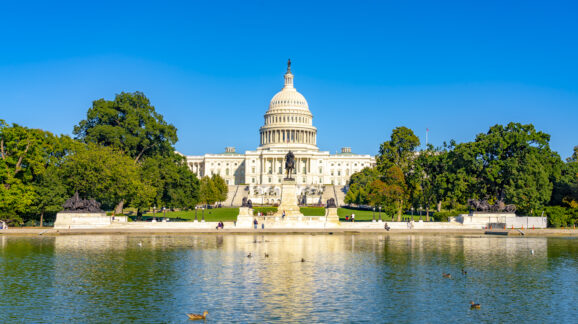Those closer to environmental problems and impacted by them know these issues better and care about them more than DC bureaucrats pushing one-size-fits-all policies. This vision is in line with what Congress intended when it passed the Clean Air Act (CAA) and Clean Water Act (CWA). Both statutes intended for states to play the primary role on air and water quality. Over the years though, the EPA has usurped state and local power and ignored Congressional intent.
The United States has some of the best air quality in the world, something that sometimes get lost given all of the scare tactics that are disseminated in the media. CEI has been a leader in pushing back against such alarmism, as well as the junk science and regulatory games that the EPA plays to improperly justify costly air quality regulations.
CEI believes that any air quality standards should be informed by sound science and do more good than harm. This is hardly controversial, but it remains an uphill battle with an often out of control EPA.
When it comes to the CWA, there has long been regulatory uncertainty. For decades, the EPA and the U.S. Army Corps of Engineers have continued to overreach on what waters are even regulated under the Clean Water Act. In 2023, the U.S. Supreme Court finally provided some clarification on this key issue in Sackett v. EPA, but the Biden administration is not implementing the opinion properly.
CEI has extensive CWA expertise, especially when it comes to the “Waters of the United States” or WOTUS issue, and is using that expertise to ensure that the federal government follows the law, respects the principles of federalism embedded in the CWA, and provides clear and workable definitions for property owners. This is just part of our CWA work, which also covers issues such as state abuse of the Section 401 certification process and EPA retroactive vetoes of Section 404 permits.
Featured Posts

Blog
Some minimum requirements for a proper WOTUS rule
In the coming weeks, the Environmental Protection Agency (EPA) and the US Army Corps of Engineers are expected to release a proposed rule defining what…

Blog
EPA right to propose repeal of 2024 power plant mercury rule
The Obama EPA’s 2012 rule for mercury emissions from coal-fired power plants may have been the agency’s least defensible measure ever under the Clean Air…

Blog
The PERMIT Act is an important step for permitting reform
Tomorrow, the House is expected to consider the Promoting Efficient Review for Modern Infrastructure Today Act or PERMIT Act (H.R. 3898). It contains several…
Search Posts
Op-Eds
EPA Launches Costly New Smog Standard
On April 15, the Environmental Protection Agency (EPA) launched its new plan to tighten the national ambient air quality standard for smog. Policy experts warn the…
Op-Eds
Sensible Policy Lost in Smog
The Environmental Protection Agency recently launched its massive new plan to fight smog. Get ready for another <?xml:namespace prefix = st1 ns = “urn:schemas-microsoft-com:office:smarttags” />Washington mandate that will do more economic harm than environmental good. Ozone, the primary constituent of smog, is a lung irritant caused by motor vehicle and industrial pollution as well as natural emissions. Smog was perhaps the single biggest reason for the 1970 Clean Air Act, and has been heavily regulated since. According to EPA, it has declined more than 30 percent in the last three decades. Outside several trouble spots in California, virtually the entire nation now is in or near compliance with existing ozone air quality standards. And, due to measures already in the works (new motor vehicle emissions standards starting with the 2004 model year, new control requirements for power plants), those areas not yet in compliance are on their way toward it. Despite lack of evidence the existing ozone standard was deficient, the Clinton administration decided to tighten it. EPA's Clean Air Scientific Advisory Committee concluded this tougher standard would not be “significantly more protective of public health,” and called the change a “policy judgment.” The agency's own cost-benefit analysis found the modest marginal benefits of the new standard outweighed by its costs. Nonetheless, EPA went ahead with the rule, sparking several years of legal challenges, all the way to the Supreme Court. The Supreme Court essentially deferred to EPA's judgment, and upheld the new standard. However, the legal delays meant this Clinton administration's rule, first promulgated in 1997, would have to be implemented by its successor. And George Bush's EPA Administrator Michael Leavitt now has obliged. Mr. Leavitt estimates compliance costs of $50 billion over the next 15 years. The specific control measures for the 474 counties currently violating the new standard will depend on the extent of noncompliance in each county. The possibilities include more stringent requirements on new or substantially modified industrial facilities, restrictions on highway construction projects, measures affecting small businesses, and more onerous vehicle inspection programs. Each of the 31 states with non-attainment areas must submit a compliance plan for EPA approval by 2007. These plans will likely remain in effect many years after. The expense will affect employment, traffic congestion, and the cost of living. Even gasoline prices may be pushed up. Areas violating the new smog standard may have to use one of the costly specialized gasoline blends that have proliferated in recent years. And many refiners now will have more difficulty obtaining approval for much-needed capacity increases. Of course, EPA's announcement of the rule gave the impression the U.S. smog problem is worsening. Nothing could be more untrue. But while the benefits of this new standard may prove hard to identify, the costs almost certainly will not.
Newsletter
Vol. VIII, No. 8
Politics Candidate Kerry on Kyoto and Global Warming The campaign web site of Senator John Kerry (D—Mass.) only briefly mentions what…
Op-Eds
Driving Away Pollution
Your next new car or truck will be the cleanest-burning one you've ever owned. And it means the end to the already-diminishing problem…
Op-Eds
A Clear Mistake
The Clear Skies Initiative, President Bush's big environmental bill targeting power plant emissions, appears to be stalled in Congress. In an effort to…
Op-Eds
The Air Gets Cleaner, While Environmental Politics Gets Dirtier
The way the administration’s environmental critics tell it, you can’t see your hand in front of your face anymore because of all the pollution…
Staff & Scholars

Daren Bakst
Director of the Center for Energy and Environment and Senior Fellow
- Energy and Environment
- Lands and Wildlife
- Property Rights

Sam Kazman
Counsel Emeritus
- Antitrust
- Automobiles and Roads
- Banking and Finance

Marlo Lewis, Jr.
Senior Fellow
- Climate
- Energy
- Energy and Environment

Ben Lieberman
Senior Fellow
- Climate
- Consumer Freedom
- Energy

Angela Logomasini
Adjunct Fellow
- Chemical Risk
- Consumer Freedom
- Energy and Environment